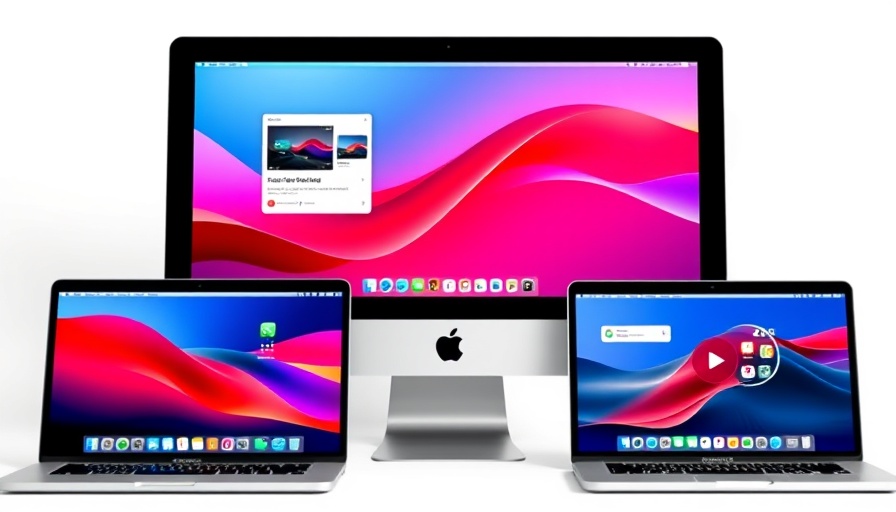
The Last Chapter: Intel Macs Bow Out with macOS Tahoe
In an era of rapid technological advancement, change is the only constant. With the upcoming macOS Tahoe release this fall, Apple is officially signaling the end of an era for its Intel-based Macs. This development not only affects long-time Mac users but could also reshape purchasing decisions for potential buyers looking at the Mac ecosystem.
How macOS Tahoe Changes the Game for Intel Users
macOS Tahoe, touted for its sleek new features, will be the final version to support several Intel Mac models, including the MacBook Pro (16-inch, 2019), MacBook Pro (13-inch, 2020 with Four Thunderbolt 3 ports), iMac (27-inch, 2020), and Mac Pro (2019). After years of gradual transition from Intel to Apple Silicon, this marks the long-anticipated phase-out of older architectures, as Apple shifts to its in-house chips known for enhanced performance and energy efficiency.
A Look Back: Intel's Legacy at Apple
Remember the excitement in 2006 when Apple first introduced Intel processors into their computers? It represented a significant leap, enhancing both performance and versatility. Over the years, the range of applications and software available for Mac systems expanded dramatically, paving the way toward today's advanced computing experience. Yet, as innovative as these machines have been, the faster clock speed of Apple Silicon chips quickly drew attention, igniting the transition that has been unfolding since 2020.
Embracing Change: A Ripple Effect on the Market
The end of Intel support also raises questions about the future for users who still rely on older Macs. While Apple has committed to providing security upgrades for these devices for an additional three years, the absence of further operating system updates poses risks not only in terms of security threats but also in software compatibility. Users may face significant limitations, prompting many to reconsider their technology investments and potentially switch to newer M1 or M2 models.
Future Predictions: Will Apple Fully Cut Ties with Intel?
As Apple continues to phase out Intel Macs, the questions arise about software optimizations and how soon all applications will natively support Apple Silicon. Some industry observers predict that software availability will lag behind hardware capabilities, possibly alienating a segment of users who are either reluctant or unable to upgrade. On the other hand, this transition could spur developers to innovate faster, creating more specialized applications tailored to Apple’s powerful chips.
Alternatives in the Transition: The Role of Rosetta
The forthcoming discontinuation of Rosetta—a vital emulation tool that has allowed users to run Intel-based applications on newer devices—adds another layer of complexity. Users are urged to explore alternatives or updates for their applications before the cutoff dates of macOS 26 and macOS 27. This shift represents a significant opportunity for developers to create native applications optimized for Apple Silicon, opening new doors for productivity enhancements.
Conclusion: What Should You Do Next?
For those using one of the last supported Intel Macs, it might be time to start exploring new options. Upgrading to an Apple Silicon device not only enhances performance but ensures compatibility with upcoming features and software updates. The move from Intel to Apple's architecture reflects a broader trend across the tech industry: embracing streamlined, efficient technology. Don't wait until the last moment; making the leap may not only improve your device performance but could also enhance your entire computing experience.
 Add Row
Add Row  Add
Add 




Write A Comment